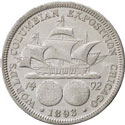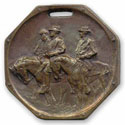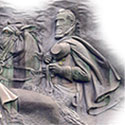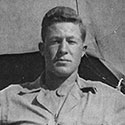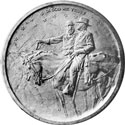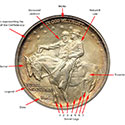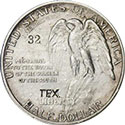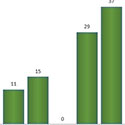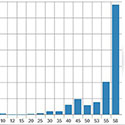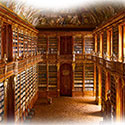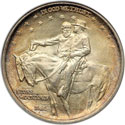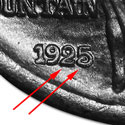
Stone Mountain
Commemorative Half Dollar
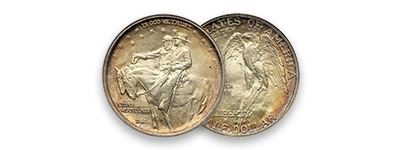
Design
Modifications
The Coin
Original Design
Modifications
Final Design
Production
A Tale of Five A's
Variations
Obverse Dies
Reverse Dies
Harvest Campaign
Counterstamp
Varieties
Gutzon Borglum's original design for the coin was rejected by the Commission of Fine Arts. What followed was a battle of wills between Borglum and the Commission that played out in a series of contentious letters.
These exerts are from letters that flowed between Borglum and the Committee, and were recorded in Don Taxay's book An Illustrated History of U. S. Coinage. The Don Taxay story is another matter, but these letters have a ring of authenticity and we will display them here as reported by Taxay. Taxay gives no reference for the bulk of the material but was known to be an excellent researcher. Since the records of the U. S. Commission of Fine Arts are preserved in the National Archives we would assume that Taxay found them and this correspondence there.
It is difficult to tell from this correspondence if the picture of the early design we have is the first or second version submitted by Borglum.
The U. S. Commission of Fine Arts
The U. S. Commission of Fine Arts was established in 1910 by Congress to give some design and aesthetic consistency to various governmental projects. While the Stone Mountain Half was being considered the committee consisted of:
While there is a scattered political connection or two in the list, for the most part these are recognized experts in various disciplines from sculpture to landscape architecture. Their skill set had to match up with the variety of projects to be considered. James Earle Fraser was a noted sculptor and coin engraver.
July 22, 1924
Borglum submitted prints of his models on July 17, 1924 for the coin to the U. S. Commission of Fine Arts. Apparently James Earle Fraser was the chief critic; the design was rejected; and this letter to Borglum from Mint Director Grant on July 22 started the battle of wills.
Sir: In accordance with your letter of July 14, submitting designs for the coin to commemorate the beginning of the work carving Stone Mountain, Georgia, and in memory of Warren G. Harding, President of the United States, in whose administration the work was begun, the Commission of Fine Arts respectively report that the artistic merit is lacking in the design.
A glance at the drawing of General Lee's body will show you that if properly drawn it would extend into the horse's back a good six inches and that his leg seems to come from the region of his waistcoat pocket. The horse's heads and necks are good, but not good enough to redeem the general design, which is poor and weak.
The reverse is crowded, and the reference to President Harding is most unfortunately made subordinate.
The entire design lacks study and appreciation of the art of the medal as distinct from the art of sculpture in general. The execution of the design would result in a coin below the standard of United States coins. The design is therefore disapproved. Very Respectfully.
So Fraser, a well respected sculptor, was telling Borglum, a well respected sculptor, that he could neither sculpt nor could he design a coin. We also need to remember that Fraser had designed the Buffalo nickel and had some experience with what worked and what did not work. The Buffalo Nickel has some noted design flaws with respect to relief placement and he had to endure some revisions to his design to get it passed.
To Fraser's and the committee's credit their criticism had some foundations in fact. Borglum had submitted a drawing that was essentially a cookie cutter punch out of the actual carving. Having Davis' horse come in from the side was awkward and the soldiers marching in the background made it look confusing and messy.
The reverse had too much wording and when reduced to the die would have been too small to read. The same can be said for the obverse wording and its reduction. This alone showed that Borglum lacked experience in coin design.
Although mad, Borglum swallowed his pride and submitted a revision on August 12, 1924. Shortly thereafter Fraser sent this note the the commission's chairman Charles Moore who forwarded Fraser's comments to Borglum.
August 12, 1924
My dear Mr. Moore: I have to report that Mr. Mowbray, Mr. Ayers, Mr. Delano and Myself have examined the new models for the fifty cent piece commemorating the valor of the soldiers of the South and Warren C. Harding, and have disapproved it. We found some changes made on the obverse side of the model which bettered the design. The reverse was in no way rearranged. The criticism of the obverse is that the design was evidently not made to fit the circular shape of the coin but is a vignetted or cut off composition from what seems to be a longer design. Not alone that, but the rendering of the work is incomplete. For example, the legs of the horses, being inadequate, will practically disappear when the coin is reduced to the fifty cent size, and the marching soldiers are crude and protruding into the circle was weak design. The reverse was considered poor in every way - the spacing, eagle, type of letter, and conception. Furthermore we thought it unfortunate that the design for a coin of which five million are to be struck couldn't have been given more consideration and study. Very truly yours.
Apparently Borglum did make changes, but not enough for the committee, and they were still criticizing his artistic skills. Indirectly they were criticizing the design for the overall carving because the coin was a reflection of that work. Borglum was offended and dismissed the letter as "damn fool suggestions." He refused to resubmit changes until the Monumental Association threatened to dismiss him. So apparently on September 21 he corresponded with the committee chairman, Charles Moore, as follows.
September 21, 1924
Dear Mr. Moore: Your letter with suggestions for other changes in the new coin I am making for the Stone Mountain Memorial Association received and I have followed the suggestions of the Commission, removing the head of Davis' horse, making several other small changes which make that side of the coin design more of a unit in itself, which I infer is the thought of the Commission.
I am also adopting the more modern style of lettering such as employed on our coins today. My reason for having used the old style of lettering was because samples of very fine old English and French coins had been given me by the Treasury Department. I infer you have a feeling that this side of the coin is a little crowded, and it would be wiser to leave the eagle off. The law permits this, and the design will be made without the eagle.
My plan at present is to get the design in shape so that after my conference with Mr. Fraser, I shall be in position to submit it to you and your associates by the eighth, a plan of design I think you will approve.
I am enclosing my letter to Mr. Fraser. I wanted very much to have a little talk with you about the matter. I have always thought, particularly since my connection with this large work in the South, of your interest in doing a big monumental work for the Detroit River. What became of your plans in connection with this? Sincerely yours.
However, while Borglum was struggling with the reverse design and removing the eagle, other political forces were at work in Washington that would leave the eagle in place. Chairman Moore wrote to the Mint Director about the association of President Harding with a Confederate memorial. It is a little difficult to decipher this message since the Harding administration was racked with scandal. Did they not want Harding associated with the memorial, or did they not want the memorial associated with Harding?
September 29, 1924
Dear Sir: The Stone Mountain coin has involved a number of questions of art which are being dealt with. There is one question of taste, however, to which the Commission respectfully calls to your attention. The linking of President Harding's name with this particular coin makes the wording of the inscription a particularly delicate matter. May I be permitted to suggest that before the inscription has been accepted by the Bureau of the Mint, the wording be submitted to the President of the United States? Very respectfully,
The result of all this was to remove the Harding reference from the coin and slightly rewording the memorial phrase. This freed up space for the eagle so it was retained but altered slightly. Fraser eventually approved the coin design but in his statement to the Commission he termed it as "barely passable."
Final Thoughts
It is not unusual for any artist to be proud and protective of their work, especially when so much effort has gone into its creation. It is not unusual for those working to establish standards to object to things that they feel are substandard or lacking merit. But the inability for Borglum or Fraser to work together left this part of the story in unfinished and poor condition. Borglum's fight with the committee and the time it took away from the actual carving led to a riff with the SMCMA that could not be repaired. Ultimately Borglum was fired, his working models destroyed, and he was arrested.
But the consumer was also harmed. We were left with a coin design that was better but not great. On the obverse the devices are too soft and if we did not have such distinctive people and the words Stone Mountain on the coin it could just be two guys on horseback having a discussion. The reverse is slightly better with the eagle having some detail in the feathers, but not much else. But the eagle is the high point in the design and offset from the center which caused an uneven flow of metal when struck. For the SMCMA some coin was better than no coin, but it could have been executed much better.
Legal Stuff
Home
History
Our Collection
Exonumia
The Coin
Original Design
Modifications
Grading
Price Guide
The Carvers
Contact Us
The Carving
Coins by Grade
Sources
Commemoratives
Statistics
Variations
Final Design Issues
Production
Harvest Campaign
Copyright (c) Georgia 1832,LLLP 2018-2018
